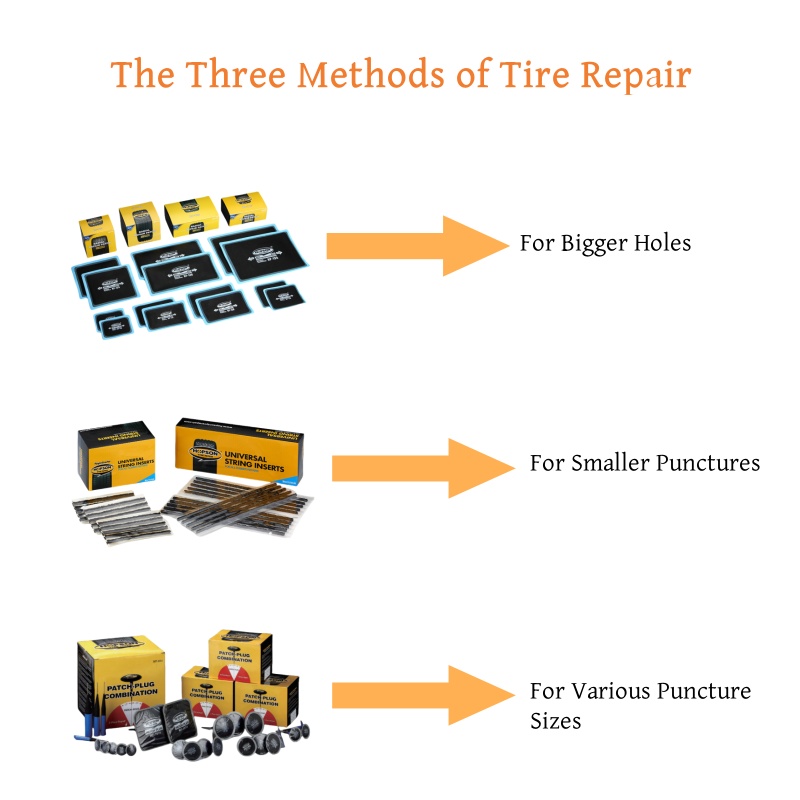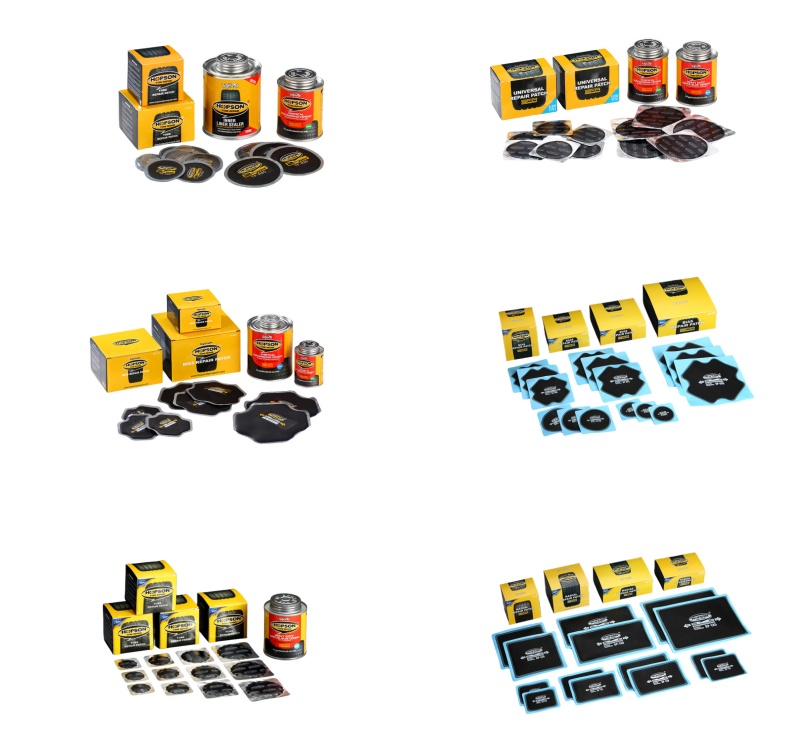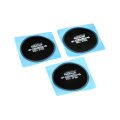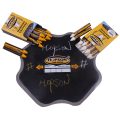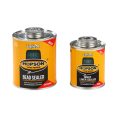How to Plug a Tire (With Detailed Steps)
Repairing a punctured tire is a common issue that many drivers face. If you have a way to perform the repair yourself, either temporary or permanent, you can at least continue to minimize your disruption and get your vehicle to a safe place.
In this post, we will explore three different methods for plugging a tire: car tire repair patches, car tire plugs, and mushroom tire plugs.

While three methods will get your tire back to functioning properly, there are some critical differences between the three. Car tire patches are typically used for bigger holes, car tire plugs are used for smaller punctures, plugging a tire is generally a quicker and easier process than patching, and mushroom tire plugs are better for sealing a wide range of puncture sizes. Offers a reliable and long-lasting repair solution.
If you’re unsure which method to use, here’s a quick guide to help you choose the most suitable method for your tire repair.
Here’s a brief overview of each tire repair method:
Car Tire Patches for Tire repair
The car tire repair patch is a flat rubber, bonded onto the hole inside the tire with tire repair glue. This method involves removing the tire from the wheel, locating the puncture, and applying the patch to cover the hole.
There are three types of tire patches: inner tube tire patches, tubeless tire patches, and universal tire patches.
Inner tube tire patches are used on tires with an inner tube, tubeless tire patches are used on tires that do not have an inner tube, while universal tire patches are used on tires with an inner tube and tubeless tires.
Advantages:
It provides a permanent and reliable seal for larger punctures, a long-lasting repair solution. Additionally, because patch bonding material permeates into tiny crevices in the sidewall of your tire, it can provide an even stronger repair than a tire hole plug.
Disadvantages:
One is that it’s typically more expensive than installing a tire hole plug, is time-consuming, and requires professional skills and equipment. Not suitable for all types of tire damage.
What tools do you need to plug a tire with car tire patches?
Car Jack
For removing tires
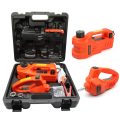
Tire Inflator
For inflating tires
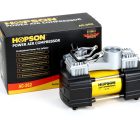
Tire Buffer
Grinding tire surface
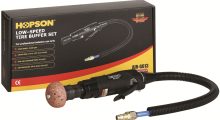
Brush
Cleaning up grinding waste
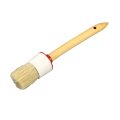
Air Vacuum Cleaner
Suction of grinding chips
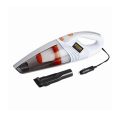
Ball Bearing Stitcher
Rolling compression tire patch
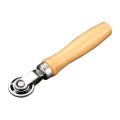
Inner Liner Scraper
For cleaning the tire or tube for puncture and section repairs before buffing.
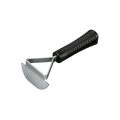
Steps to repair a tire with tire patch
- Remove the tire.
- Locate the leak and use a tire crayon to mark it.
- Use rubber cleaner to clean the tire surface and scrape off surface dirt with a rubber scraper.
- Use the tire patch and tire crayon to outline the tire repair area.
- Use a grinding tool to grind the tire surface within the outline.
- Use a brush to clean away debris from sanding.
- Use an air vacuum cleaner to suck out the debris.
- Apply a layer of vulcanizing cement on the polished tire surface and wait for one minute until the glue is no longer sticky to the touch.
- Peel off the protective film on the back of the tire patch and stick it on the surface of the tire in the correct position.
- After applying, use the ball bearing stitcher to roll and press the tire patch.
- After rolling and pressing, peel off the protective film in front of the tire patch.
- Finally, apply a layer of bead sealer evenly around the tire patch.
- Reinflate the Tire
- Check for Leaks.
- Monitor and Retest.
The video illustrates the process of repairing a tire using a tire patch with a removed tire.
Tire Plugs for Tire Repair
Tire plugs, also known as rubber plugs or string plugs, are temporary fixes for a punctured tire, inserted directly into the puncture from the outside of the tire.
This method is quick and convenient for fixing small to medium-sized punctures inserted into the tire’s hole to seal it and prevent air from escaping.
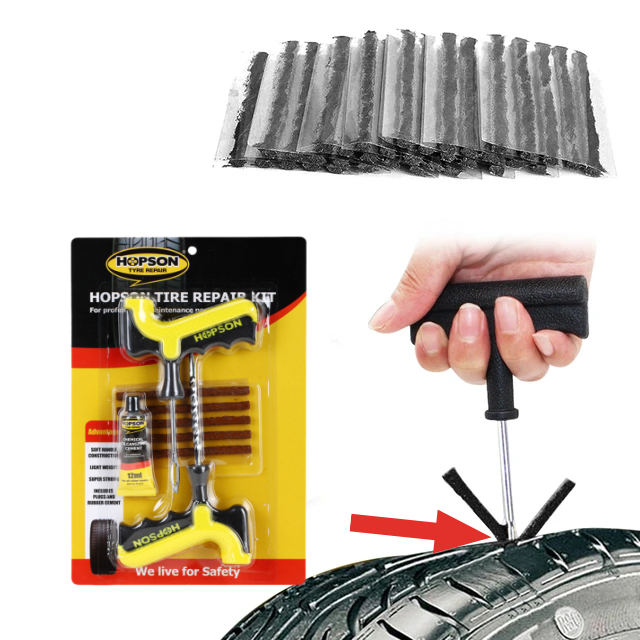
Advantages:
Tire plugs are typically less expensive than patches, easy and quick to use, and no need to remove the tire from the wheel. Effective for temporary repairs.
Disadvantages:
Tire plugs mayn’t provide a long-term solution for larger punctures. They are not considered permanent fixes. They may also come out over time if they are not installed correctly.
What tools do you need to plug a tire with tire plugs for tire repair?
- Car Lack
- Tire Inflator
- Air Vacuum Cleaner
- Tire Repair Kit (Include tire plugs, spiral tire repair tool, tire insert tool, and knife )
- Pliers
Steps to repair a tire with tire plug
- Remove the tire.
- Locate the leak
- Ream out the hole
- Prepare the plug
- Insert plug into tool
- Apply tire rubber cement
- Plug the tire
- Remove excess plug and cement
- Re-Install Tire
- Check for Leaks
- Monitor and Retest
The video illustrates the process of repairing a tire using a tire plug with a removed tire.
Mushroom Plugs for Tire Repair
Mushroom tire plugs, also called patch plugs, combine the benefits of repair patches and tire plugs.
They are inserted from the inside of the tire like a patch and provide a secure seal like a plug.

Advantages:
Effective for sealing a wide range of puncture sizes. Offers a reliable and long-lasting repair solution.
Disadvantages:
Requires specialized tools and skills for installation. May be more costly than other methods.
What tools do you need to plug a tire with mushroom plug?
- Car Jack
- Tire Inflator
- Air Drill
- Pliers
- Wound Measurement Tool
- Ball Bearing Stitcher
- Mushroom Plug
- Tire Rubber Cleaner
- Tire Crayon
- Tire Buffer
- Brush
- Air Vacuum Cleaner
- Vulcanizing Glue
- Bead Sealer/Tire Repair Sealant
- Knife
Steps to repair a tire with mushroom plug
- Remove the tire.
- Locate the leak
- Use tire crayon to mark damaged areas
- Use pliers to remove the foreign object inside
- Use a wound measuring tool to measure the wound size and whether the damage angle is greater than 25°
- Use rubber cleaner to clean the tire surface and scrape off surface dirt with a rubber scraper. Repeat this step multiple times
- According to the measured wound size, select the appropriate mushroom plug and mark the position on the tire surface.
- Use a grinding tool to sand the marked area
- Use a brush to clean away debris from sanding
- Use an air vacuum cleaner to suck out the debris
- Use an air drill to drill and polish the interior and outside of the wound
- Clean the wound area again with the rubber cleaner.
- After the wound area is dry, apply a layer of vulcanizing cement evenly. Note: Vulcanized glue also needs to be applied inside the wound
- After the vulcanizing glue dries, tear off the protective film on the back of the mushroom plug and insert the mushroom plug into the wound.
- Pull out the mushroom plug on the outside of the tire with force until they can no longer be pulled out.
- Use the ball bering stitcher to roll and press the mushroom plug. Tear off the protective film in front of the mushroom plug.
- Remove excess plug
- Re-Install Tire
- Check for Leaks
- Monitor and Retest
The video illustrates the process of repairing a tire using a mushroom plug with a removed tire.
Tire plug vs tire patch vs tire plug patch
The advantages and disadvantages of the three tire repair methods, tire plug, tire patch, and tire plug patch, have been explained above.
To choose the right tire repair method, you need to consider the following factors, including the size of the puncture, the type of damage to the tire, your driving habits, and the availability of professional assistance. For minor punctures, using a tire plug can provide a quick fix.
However, for larger or more severe damage, opting for a tire repair patch or mushroom plug offers a more durable solution.
Each method has its pros and cons, so it’s crucial to make a well-informed decision based on the extent of the damage and your specific requirements. Remember to prioritize safety at all times and seek professional help when necessary.

